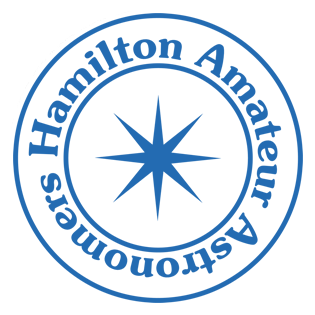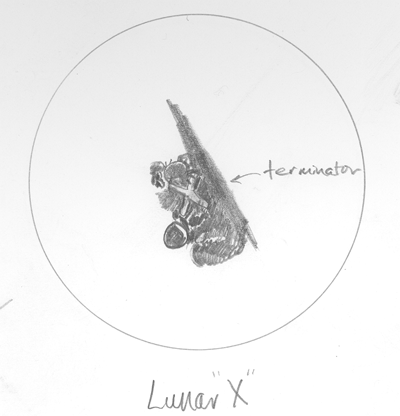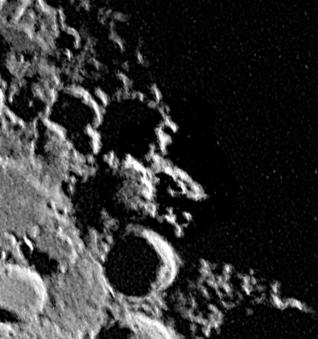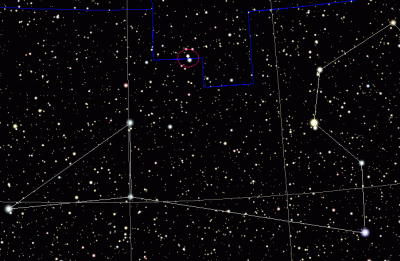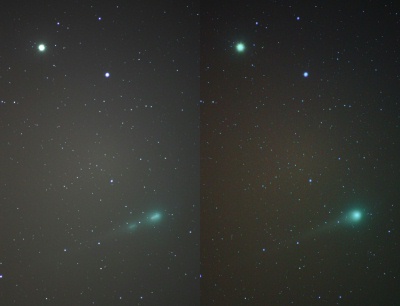Gail and I arrived at the gate at 7:20pm and I was switching the locks when Mike Griswald drove up. ?I?m not a member,? he kindly informed me. ?Not a problem,? I replied. ?You soon will be!?
Down by the boat launch we found the parking lot surprisingly dry and firm for this time of year so decided to set up there. Mike assembled a nice Stellarview Nighthawk 80mm refractor, with an 18mm Televue Radian, on a quick and easy alt-az mount, and we had brought our 6? dob and binoviewer set-up. As we were aligning finderscopes Ann Tekatch pulled in. From her collection she?d brought her ?scope of the week?, a Meade 80mm f11 refractor, also on an alt-az mount. Within minutes we were all aiming at our first target ? the Moon.
Gail found an interesting crater beside the terminator, near the South Pole. Using the Virtual Moon software she identified it as Newton. One of the older craters, Newton is about 82km wide and 8000m from rim to floor. Mike and I came across the crater Clavius almost at the same time. Clavius contains an interesting subset of craters, evenly spaced in an arc, and graduated large to small like a set of measuring cups. Inside the arc is a dome-like feature that is an eroded massif (mountainous region).
Ann then went hunting for the Davey crater chain, and after referring to Ruckl?s Atlas of the Moon, and Charles Wood?s Modern Moon, soon found it and showed us a thin bright line across the floor of the crater Davey. Bumping the power in our binoviewers to 210x, we were just able to distinguish the line of small craters as a linear series of bright dots.
Humidity was fairly high, yet the clouds that had covered our drive to the park had gone East and the sky steadily improved. The wind had died down considerably from earlier in the day and the record-setting temperatures of the afternoon were still a few degrees above freezing.
Mike?s scope gave us a nice wide field view of the Pleiades, and after Ann had finished her sketch of the crater chain she switched ep?s and gave us a sharp view of Saturn. We were spoiled by the all of the fine optics on hand and soon found 4 of Saturn?s moons despite the low altitude of the planet and the fair to middling transparency.
Even with the bright Moon, you can?t ignore the Orion Nebula and we were soon comparing views of the Trapezium. But at this point, the air over the park reached the dew point and within moments all surfaces were wet. It was time to pack up.
After a long cold winter with all too infrequent observing opportunities, it was nice to share some photons with friends. Thanks Ann. Thanks Mike. We had a good night.
Glenn
